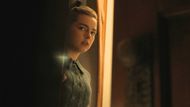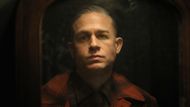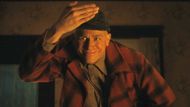True crime shows keep coming, and the latest is Monster: The Ed Gein Story, which premiered on October 3. This is the third season in Ryan Murphy's Monster series. The first two focused on Jeffrey Dahmer and the Menendez brothers. The new season did not receive much praise. Many viewers felt it was weaker than the previous ones. Critics pointed out problems with the story, accuracy and pacing. According to the Guardian,
"The end product is crass where it tries to be elegant, exploitative where it plays at compassion."
Critics slammed Monster: The Ed Gein Story for being exploitative, overly graphic and historically inaccurate. It was a "pure freak show" and accused of "carelessly comparing gender queerness with harmful deviance." Charlie Hunnam's acting got mixed reactions. Some liked it, others did not.
Monster: The Ed Gein Story also included several dramatic scenes that were not a part of the real events. The reality and fiction were also combined in the show to make the story more intense. Certain characters and crimes were altered or invented. These decisions aided in the creation of suspense, yet not what actually occurred. The article discusses 7 fictional storylines shown in the series that were not true in real life.
Disclaimer: This article is based on the author's opinions. Reader discretion is advised.
Here is the list of the 7 storylines from Monster: The Ed Gein Story that were pure fiction, not real life:
7. Adeline as Gein's romantic accomplice

Monster: The Ed Gein Story highlights Adeline as Ed Gein's enthusiastic romantic partner participating with him in the commission of crimes. In reality, there is no proof that Adeline assisted Gein in the commission of any murder or grave robbing. Adeline Watkins exposed herself.
Moreover, Adeline dated Gein for a while, but they were neither criminal nor enthusiastic lovers. She claimed that after a few months, at most, rather than years, they were truly friends who went to watch movies together. Neither a police record connecting Gein to the crimes nor any reference to her in relation to Adeline is found. According to RollingStone, Brennan said on Netflix:
“It really matters........you look at and the images......stories you consume. They do stick with you...........an impact.”
The series' version of Adeline egging on killings and collaborating with Gein is incorrect. Adeline was not his real-life romantic or criminal partner. According to police and historical archives, this idea was introduced solely to heighten the drama of the story for the audience.
Fact: Was there a girlfriend for Ed Gein? Information from Monster: The Ed Gein Story on Netflix.
6. Gein's involvement in Henry's death

According to the series, Ed Gein murdered his brother Henry. This scene is dramatic, but there's no proof that Gein killed Henry. In real life, Henry died in 1944 from smoke inhalation while helping Ed fight a brush fire. The police raised an investigation but found no evidence to suggest foul play. Most agree that the death of Henry was accidental or the outcome of natural causes such as heart failure.
In Monster: The Ed Gein Story, Ed Gein was never charged or a suspect for the death of his brother. The producers showed Ed as the one who caused Henry's death to add more tension and show his dark transformation. But this didn't actually happen in real life. The idea that Gein murdered his sibling is purely imaginary.
Fact: Did Ed Gein really kill his brother Henry? Information about Netflix's Monster: The Ed Gein Story.
5. Gein kidnapped Evelyn Hartley

Monster: The Ed Gein Story shows Ed Gein kidnapping Evelyn Hartley, an unmarried lady. This never happened. Evelyn Hartley was a real person kidnapped from her babysitting job in La Crosse, Wisconsin, in 1953. The case was very popular, but Ed Gein was never suspected or linked to the kidnapping. Evelyn was kidnapped over two hours away from where Ed Gein resided, and no evidence was put forth that would link him to the crime.
The county detectives and police cleared Gein of this crime before this even took place in 1957 for other crimes. The show uses this plot twist to heighten the tension, but Ed Gein plays the part. The allegations that Gein kidnapped Evelyn are all fictional stories, and there are no police records or witnesses that link him to the Hartley cold case.
4. Gein helped in catching Ted Bundy

Monster: The Ed Gein Story also suggests Ed Gein assisted police in capturing the notorious serial killer Ted Bundy. This is untrue and made up for the plot. Gein and Bundy never encountered each other, and their crimes took place years later in different states. Ed Gein was arrested in 1957 in Wisconsin and spent the rest of his life in a mental asylum. Ted Bundy committed crimes in the 1970s across different states and was caught in Florida in 1978. Former FBI, John Douglastold People Magazine,
"I had the opportunity to.......meet him, but Gein .......psychotic that it.................an interview"
The producers inserted the connection to Ted Bundy to generate some excitement. However, no historical records or newspaper coverage indicate that Gein was associated with Bundy. The story that police assisted them to capture Bundy with the help of Gein is not reality-based, but is not related to any actual events. It was merely made up to add drama to the series.
3. Chainsaw chase inspired by Texas Chainsaw Massacre

In Monster: The Ed Gein Story, Gein essentially chases two bear hunters who go missing in the forest before he uses a chainsaw to cut them all in half. It is a moment of intense foundation that is fictional. No one ever claimed that Gein ever used a chainsaw to kill anybody. It was inspired by the popular horror film The Texas Chainsaw Massacre, which was more or less based on the crimes committed by Gein.
The showrunners inserted this scene to connect Gein with this legendary film and heighten the dread and thrill onscreen. The reality is that Gein committed his heinous acts with the aid of guns and knives. The disappearance of two hunters, Victor Travis and Raymond Burgess, still is a mystery, but there is no evidence relating Gein to their disappearance or homicide. It is a show invention which is not representative of actual events.
2. Ed as sympathetic

Monster: The Ed Gein Story claims that Ed Gein is presented in a positive light and gives an explanation for his murderous behavior. It depicts his childhood life of loneliness with a vindictive mother who left a great impact on him. Gein was an isolated man with mental health issues in a small town in Wisconsin. The show takes time to explore his suffering, misunderstanding, and the way he acted due to his growth and his surroundings.
The show raises the question of whether he was destined to be a monster or if his life shaped him into one. Such a sympathetic perception makes viewers think of Ed as something more than a villain. It reveals his female aspect despite his hideous crimes. The show aims to give a broad picture of his horrific acts, trauma, and mental health problems.
1. Adeline's confession and last visit to Ed

Adeline admits in the last episodes of Monster: The Ed Gein Story that she was involved in Ed's life and his crimes. She is depicted as a black person who was and always has been in favor of Ed's violent lifestyles, and she is ready to continue his disconcerting story. This would be the final encounter between the two, before Ed dies. In this fictitious scene, Ed tells Adeline in an unusual way that he does not want her to continue on this path.
This scenario signifies a change or a turning point. Her confession and her final visit, however, are products of dramaturgy and have little to do with known realities. Adeline was not criminally tied to Ed, and their bond in real life was rather minor. The visit felt emotional and symbolic. It gave the piece a dramatic ending and indicated that the melancholy continued even after Ed's passing.
Fact: Did Ed Gein kill Adeline Watkins?
Monster: The Ed Gein Story included false storylines to generate shock and emotion among the viewers. Ed Gein was represented in the show in a way that was not consistent with history. The audience was exposed to things and relationships that were not real. These transformations made the show more dramatic as well as misleading the reality regarding the life and murders committed by Gein.
